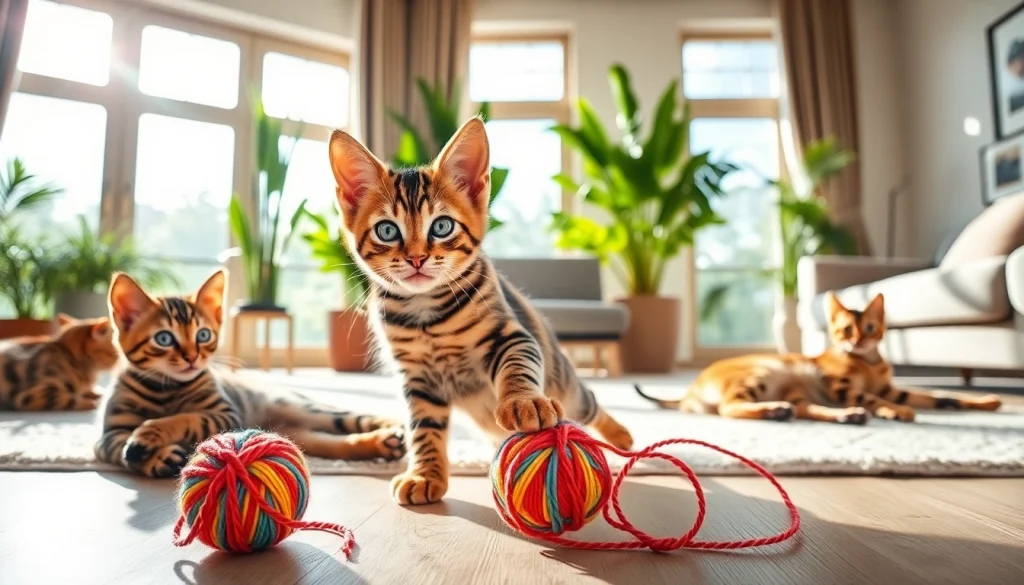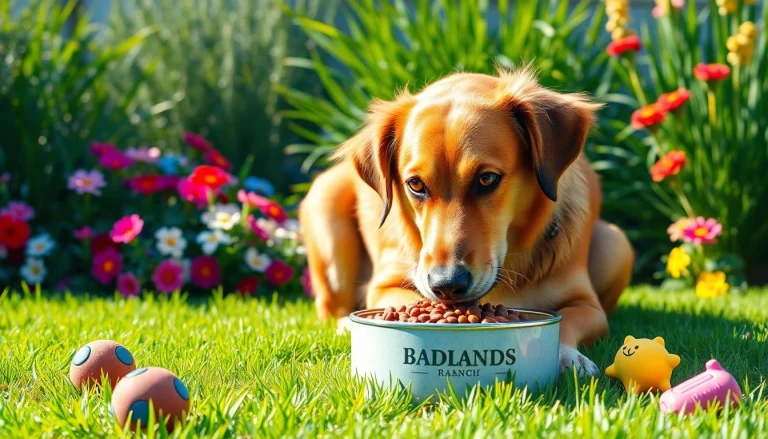
1. Understanding the Bengal Cat Breed
1.1 History and Origin of Bengals
The Bengal cat, known for its striking appearance and playful demeanor, is a relatively new breed that originated in the 1980s. Its lineage can be traced back to a cross between domestic cats and the Asian leopard cat (Prionailurus bengalensis), initiated by Jean S. Mill, a California breeder. The aim was to create a cat that displayed the wild elegance of its exotic ancestors but retained the affectionate temperament expected of a domestic pet. The breed gained popularity for its unique markings, which resemble rosettes and spots akin to those found on leopards.
The Bengal breed quickly captured the hearts of cat enthusiasts, leading to the recognition of the breed by The International Cat Association (TICA) in 1983. By 1991, Bengal cats became fully championed, solidifying their place in the realm of domestic pets. This lineage has created a breed that not only boasts aesthetic beauty but also a spirited personality. Understanding this history is crucial for prospective owners, as it reflects the adaptability and playfulness that Bengals embody.
1.2 Characteristics of Bengal Cats
Bengal cats are renowned for their stunning visuals and energetic nature. They typically feature a muscular build, long legs, and small ears, giving them a sleek appearance. Their coat is short and dense, with a unique pattern that can range from marbled to spotted, often exhibiting vibrant colors such as golden, silver, and snow variations. This distinctive coat requires minimal grooming compared to other breeds, making them relatively low-maintenance in this regard.
One of the hallmark traits of Bengal cats is their intelligence. They are quick learners, often mastering tricks and commands easily. Their curiosity means they require plenty of mental and physical stimulation, making interactive playtime essential. Furthermore, Bengals are known for their love of water, often engaging in playful splashes around sinks or even joining owners in the shower.
1.3 Health Considerations for Future Owners
While Bengal cats are generally healthy, prospective owners should be aware of potential health issues that can arise within the breed. These include genetic disorders such as hypertrophic cardiomyopathy (HCM), which affects the heart muscle, and Progressive retinal atrophy (PRA), which can lead to blindness. Responsible breeders will practice health testing and provide certification to ensure their breeding stock is free from such conditions. For anyone considering adding a Bengal to their family, it’s crucial to choose a breeder who prioritizes health and wellness through genetic testing.
2. Key Factors to Consider When Selecting Bengal Breeders in Orange County
2.1 Reputation and Registration of Breeder
When looking for Bengal breeders in Orange County, one crucial factor to consider is the breeder’s reputation. A reputable breeder will be registered with a recognized cat association, such as TICA or CFA, providing assurance of their adherence to strict breeding standards and ethical practices. Online reviews, recommendations from other owners, and social media presence play significant roles in evaluating a breeder’s credibility. Engaging with fellow Bengal owners in forums or local events can yield invaluable insights and personal experiences that can aid in the decision-making process.
2.2 Assessing Breeder’s Conditions and Ethics
Ethical breeding is essential for the well-being of the kittens. A visit to the breeder’s facility can provide firsthand insights into the living conditions of the cats. Look for signs of cleanliness and care, as well as space for the cats to roam. Responsible breeders prioritize the health and happiness of their kittens, often allowing them to socialize in a family environment, which fosters their playful and affectionate nature.
2.3 Health and Genetic Testing of Kittens
Before purchasing your Bengal kitten, ensure that the breeder conducts comprehensive health screenings and genetic testing. This helps identify any potential hereditary health issues early on. A reputable breeder should provide documentation of health clearances for both parents, including tests for common genetic disorders associated with Bengals. It’s imperative to ask about these items during your inquiry, as they are critical to the long-term health of your future pet.
3. Comparing Top Bengal Breeders in Orange County
3.1 Overview of Popular Catteries in the Area
As of now, several prominent Bengal breeders operate within Orange County, each offering unique benefits that cater to prospective owners. Notable among these are:
- Baby Bengals – Known for TICA-registered kittens with champion bloodlines, boasting quality standards and vibrant markings.
- Bengal Babies – Offers an inviting environment for potential owners, ensuring each kitten is comfortable and well-socialized.
- Purfect Pride Bengals – A dedicated breeder focused on health and temperament, with a thorough genetic testing process.
- Shangripaw Bengals – Specializes in melding beauty and temperament, promoting their cats’ playful yet loving nature.
3.2 Unique Selling Points of Each Breeder
Each cattery mentioned above holds unique advantages. For instance, Baby Bengals emphasizes not only pedigree but also dedicated customer service, which includes guidance on kitten care. Bengal Babies revolutionizes the kitten purchasing experience by allowing prospective owners to interact with the kittens in a friendly, open setting. Meanwhile, Purfect Pride Bengals prides itself on rigorous health screenings, allowing owners peace of mind regarding their new furry companions.
3.3 Customer Reviews and Testimonials
Customer testimonials can provide potent insights into the experiences of previous buyers. A quick search of online reviews can reveal stories of satisfaction or disappointment, allowing you to assess which breeder aligns best with your expectations. Look for feedback regarding the responsiveness of breeders, the condition of the kittens upon arrival, and ongoing support offered even after adoption.
4. The Process of Acquiring a Bengal Kitten
4.1 What to Expect During the Adoption Process
Once you’ve selected a breeder, understanding the adoption process is paramount. It typically begins with an application, where the breeder assesses your suitability as a pet owner. Providing honest answers regarding your lifestyle, home environment, and previous pet experience can facilitate smoother communication.
After approval, you may be required to pay a deposit to secure your selected kitten. Upon the kitten’s readiness for adoption—generally around 8 to 12 weeks—you will be contacted to arrange for pickup or delivery, which allows you the chance to prepare for your new addition.
4.2 Preparing Your Home for a Bengal Kitten
Preparing your home for a Bengal kitten goes beyond just acquiring supplies. Begin by purchasing essential items, including a comfortable bed, litter box, scratching post, and interactive toys that cater to their playful nature. Furthermore, discussing diet with your breeder can lead to insights about the best nutritional options to support your kitten’s healthy growth.
Safety is also paramount; inspect your home for hazards like loose wires or small objects that a curious kitten might chew on or swallow. Creating a feline-friendly environment will allow your Bengal to thrive and adjust positively to their new home.
4.3 Post-Adoption Support and Resources
After bringing your new Bengal home, utilizing resources available from your breeder can lead to optimal integration of your kitten into your family. Many reputable breeders maintain open communication lines, providing guidance regarding behavior, feeding, and health. Engage in regular check-ups with a veterinarian to monitor your kitten’s health and establish a vaccination schedule. Online resources and local Bengal cat clubs can also provide invaluable tips and support from fellow cat enthusiasts.
5. Caring for Your Bengal Cat
5.1 Nutrition and Feeding Guidelines
To ensure optimal health, Bengal cats require a balanced diet that is high in protein. Since they are more active compared to other breeds, providing them with quality cat food that meets their energy needs is vital. Consult with a veterinarian to determine the specific dietary requirements based on your cat’s age, weight, and overall health. Additionally, incorporating healthy treats and monitoring their weight can prevent obesity, thus maintaining their agility and vitality.
5.2 Training and Socialization Tips
Training Bengal cats can be an enjoyable experience due to their intelligence and eagerness to please. Start with basic commands, utilizing positive reinforcement techniques such as treats and praise. Early socialization is also crucial; exposing your Bengal to various environments, people, and other pets will help them develop into well-adjusted adults. Activities such as clicker training and interactive toys can further enhance their cognitive skills while creating a strong bond between you and your pet.
5.3 Regular Health Checkups and Veterinary Care
Maintaining consistent veterinary care is a crucial aspect of owning a Bengal cat. Regular checkups allow for preventive healthcare practices, such as vaccinations and flea treatments. Additionally, health issues unique to Bengals, like HCM, can be monitored through yearly examinations. Keeping in touch with a veterinarian familiar with the breed will ensure that your Bengal cat receives tailored advice and care throughout their life.





